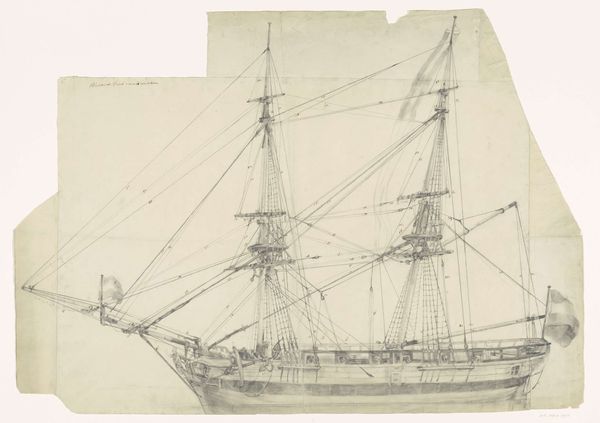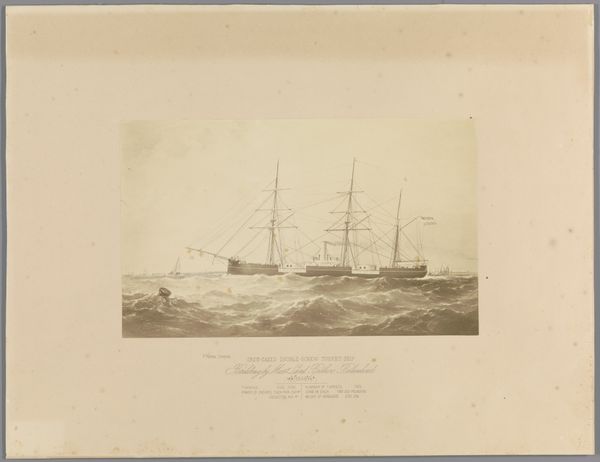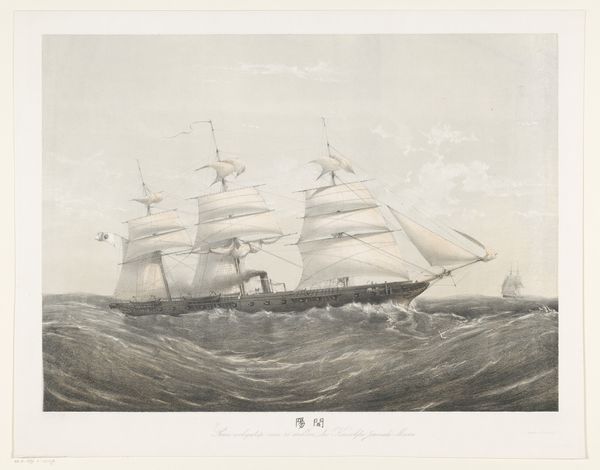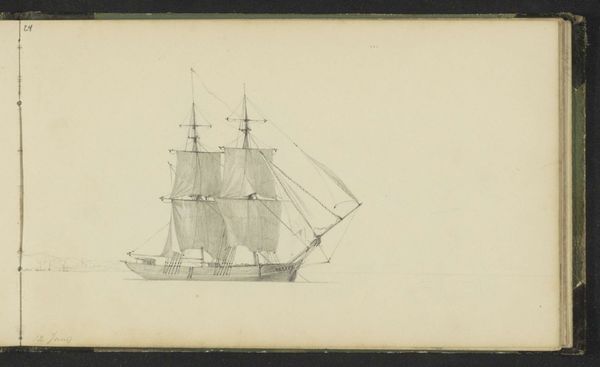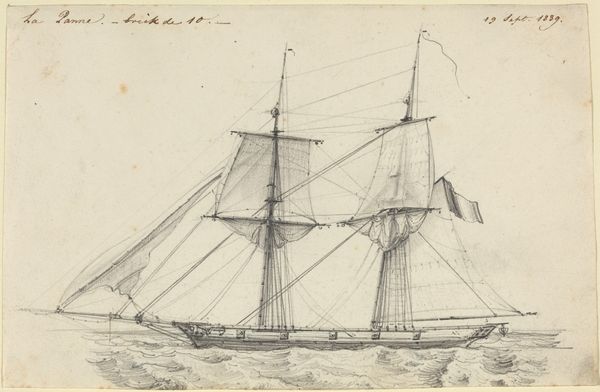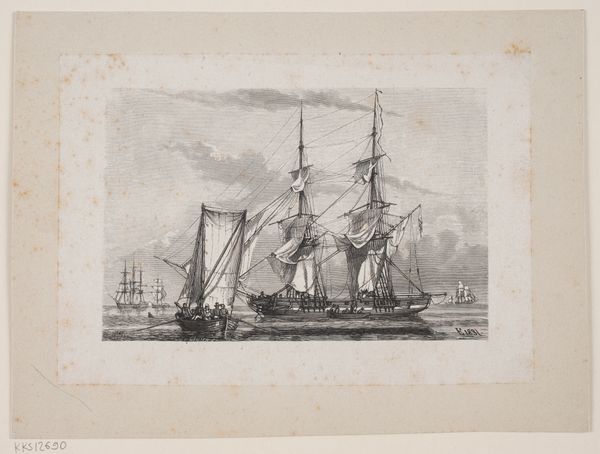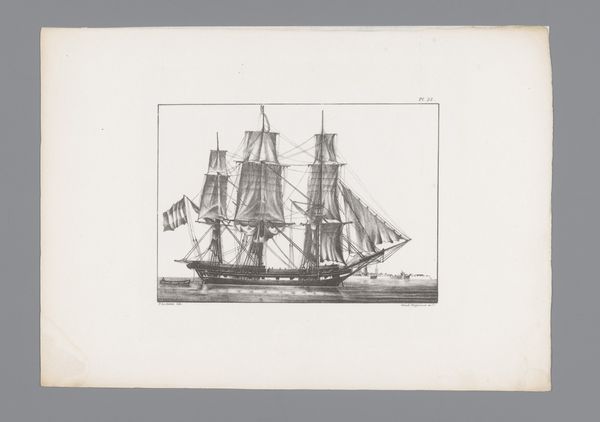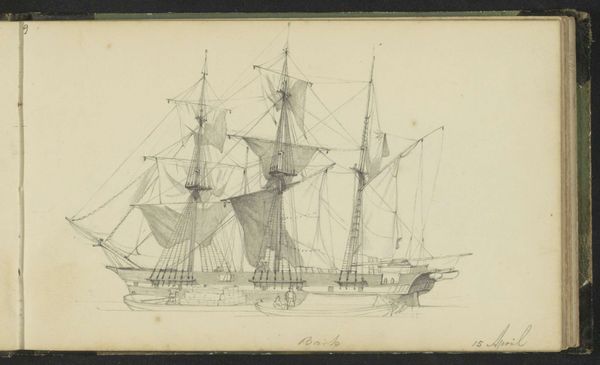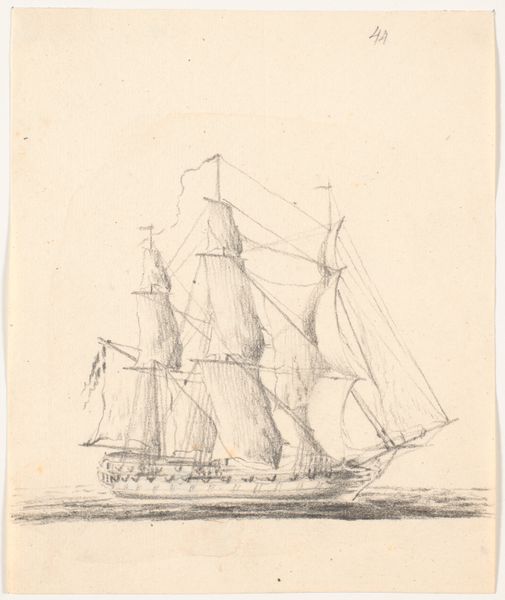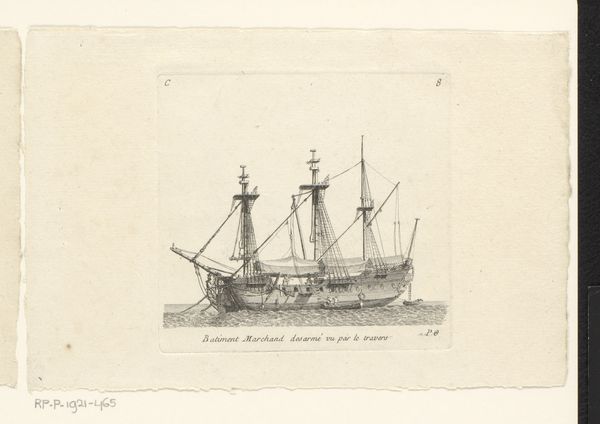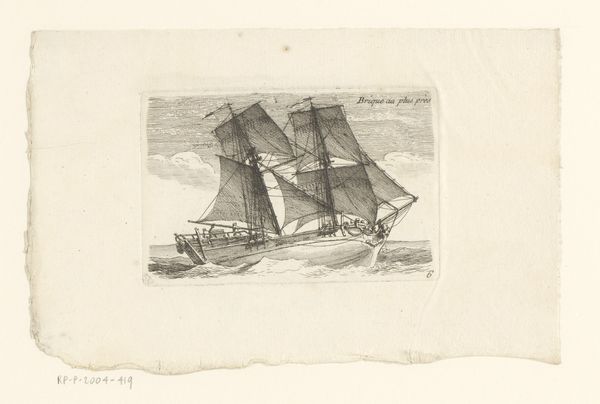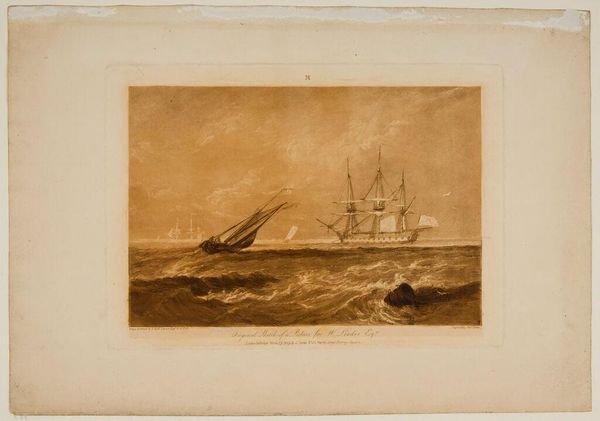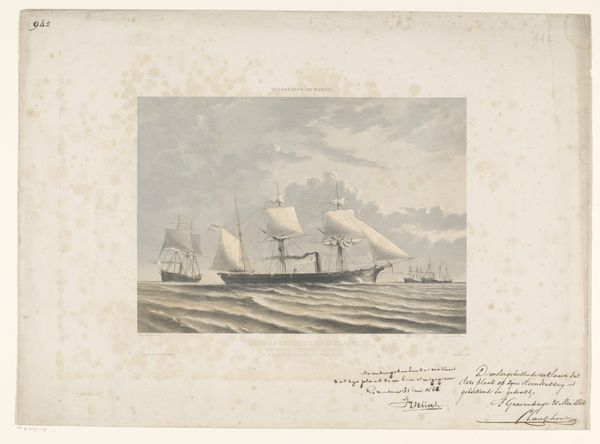
Fotoreproductie van een schilderij van de H.M.S. St. George, daaronder een portret van prins Alfred van Saksen-Coburg en Gotha 1851 - 1885
0:00
0:00
Dimensions: height 271 mm, width 337 mm
Copyright: Rijks Museum: Open Domain
Curator: This is a photograph taken by John Jabez Edwin Mayall sometime between 1851 and 1885, it's a photographic reproduction of a painting depicting the HMS St. George, with a portrait of Prince Alfred, Duke of Saxe-Coburg and Gotha included. Editor: It immediately conveys a sense of turbulent drama. The ship seems caught in a struggle against an almost overwhelming sea, there’s almost something ominous about the scene. Curator: The image’s creation reveals layers of Victorian social and cultural dynamics. The reproduction of a naval vessel, coupled with a royal portrait, subtly reinforces ideas of British power and prestige during a time of extensive colonial expansion. The commercial aspect is crucial too. Mayall's studio mass-produced images, feeding a Victorian desire for both portraiture and scenes of national pride. Editor: Symbolically, the sea is very important. In art it can mean so many things, here the chaotic water could represent life's unpredictable and dangerous journey, while the ship symbolizes the human endeavor to navigate those challenges, there’s a psychological narrative about control and the uncontrollable. Even the inclusion of Prince Alfred infuses the imagery with ideas about duty and national destiny. Curator: What's interesting to me is the act of reproduction itself. Photography was relatively new at this point. What did it mean to copy a painted image with photography? Did it democratize the image, making it accessible to a wider public? Did it authenticate or cheapen it? Editor: It certainly added a layer of verisimilitude. By taking a photograph, the original image, whether painted or drawn, acquires the authority that was already being attributed to photographic images; truth-telling through indexicality. It becomes a visual testament to the empire's achievements, but with a slightly new twist due to photography's connection with realism. Curator: Indeed. This photograph acts as a social and political artifact of its era, illustrating Britain’s perception of its place in the world, reproduced and disseminated through new photographic technologies. Editor: Examining how Mayall chose his source images and motifs reveals so much about how he spoke to people's underlying belief system, touching on potent symbols. It's more than a picture, it is an insight into how they envisioned their country and its place in time.
Comments
No comments
Be the first to comment and join the conversation on the ultimate creative platform.
